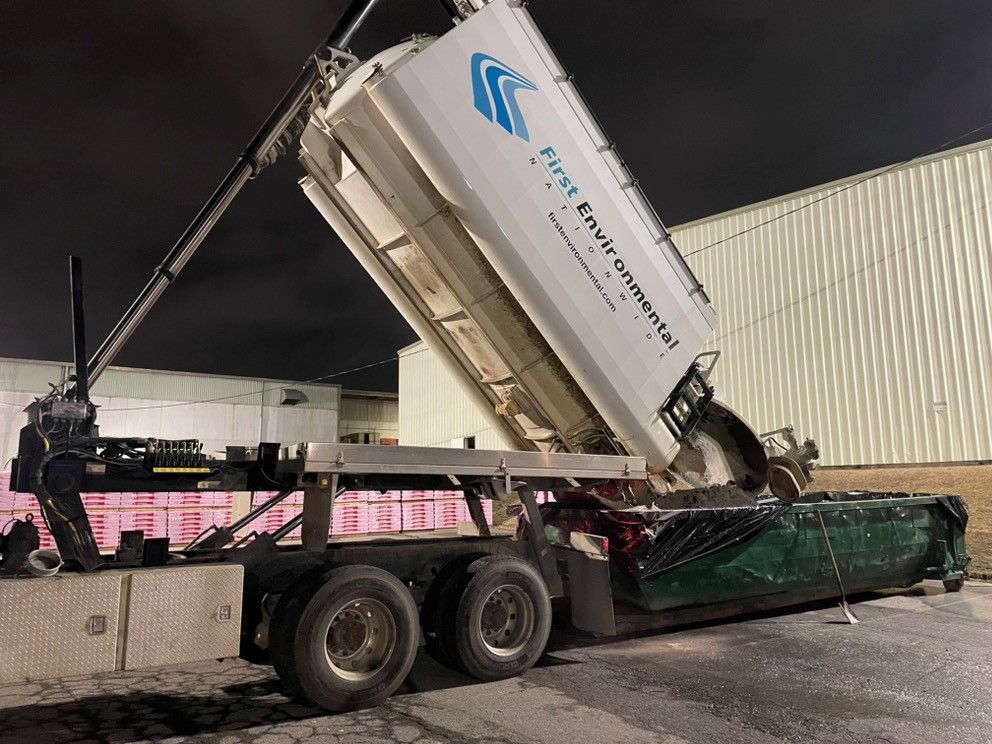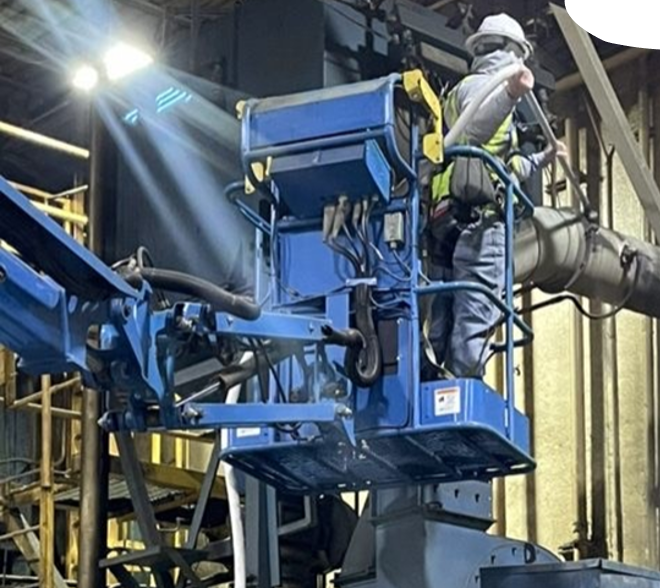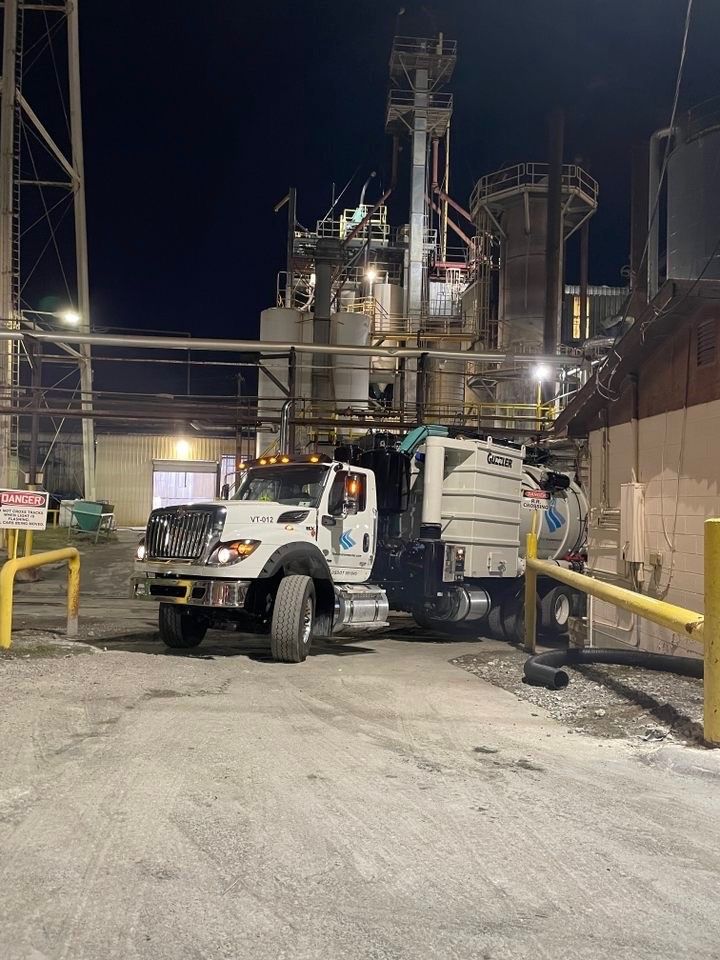What You Need to Know About Vacuuming Solids
Vacuum trucks are big pieces of equipment used to handle the hardest jobs in industry. If you see a vacuum truck driving down the road, it is noticeable because of its size, and tanks, and hose, and baghouses. They look awesome, but we are a little biased. When you are vacuuming solids, you need the right tool that can handle the job, and in this case that means a big piece of equipment.
Purpose of Vac Truck and Choosing the Right One for Solids
The vac truck’s purpose is to remove materials that businesses have in hard to manage places. First, let’s tackle materials. The vac truck can handle liquid, solids, sludges and powders. It can also handle gravel and sand. Since we are specifically talking about vacuuming solids, it is important to make the distinction that not all vacuum trucks are created equal. Smaller vacuum trucks are designed for smaller tasks. For solids removal, you need a larger (also heavier) unit that creates more vacuum, up to 5,300 CFM (cubic feet per minute) at 28” Hg (inches of vacuum at sea level). For comparison, a home vacuum cleaner is around 50 CFM. This leads us into the dynamics of using this piece of equipment. First Environmental primarily chooses the bigger vacuum units because that is what our customers need.
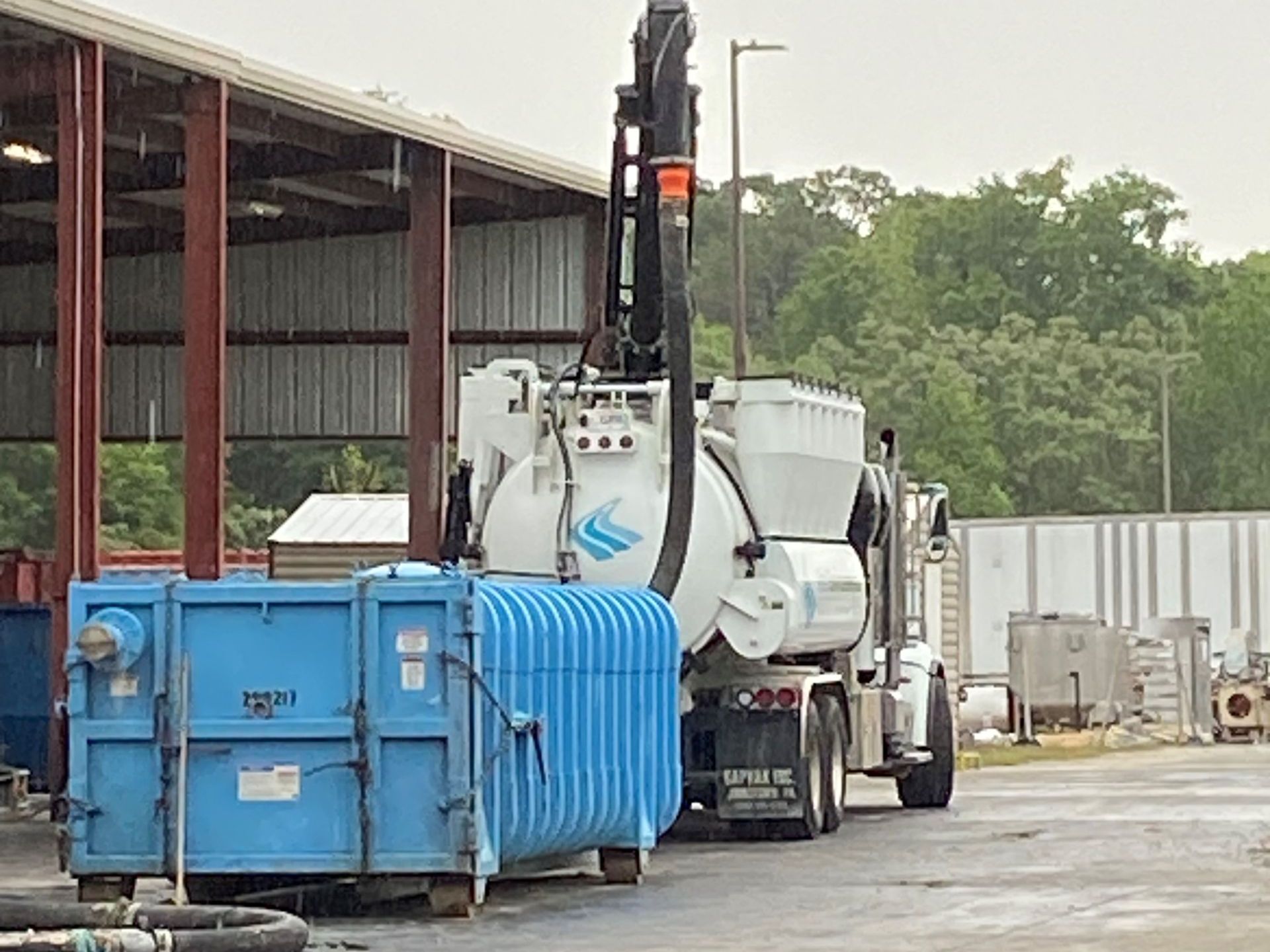
Moving Solids Using Vacuum
Essentially, a large pump (or blower) displaces air from the holding tank creating vacuum, and the vacuum is used to “pull” the solids. The solids can be pulled into the holding tank. When the tank is full, the solids can be discharged. If the client needs to keep the material or has an on-site location for the material it is off-loaded there. Other times, the client will need to off-load into a roll-off box for disposal. We use vacuum trucks with high dumps so that material can be discharged directly into the roll-off box instead of onto the ground and relocated into the roll-off box.
Another solution is the vacuum box. The vac box can be set up “before” the vac truck to allow the materials to be moved into the container before getting to the vac truck. This isn’t really a physics lesson, but the air flow will pull the material into the opening at the top of the box and drop the solids into the container while the vacuum is pulling out the other top side port. This means solids stay in the vac box, and not in the vac truck. It is designed this way to make for easier collection and shipping to a disposal facility.

Some Interesting Considerations for Vacuuming Solids
How to collect the material is part of the process, and so is conveyance. In an ideal world, the operator points the hose at the solid and it collects with ease. This can happen, especially with sand and free-flowing materials. Usually, the vacuuming end of the hose needs to allow air flow and collect solids at the same time to keep consistent vacuum. Most of our projects are not ideal. So, understanding how to work through challenges is part of the expertise of the cleaning process. Large chunks can impact flow, and so can heavy materials and sludges. In these cases, collection and conveyance can be affected, and the use of water-blasting or pressure-washing tools can be used to manage solids (sizing) and to improve flow to the vacuuming hose. The liquid helps the flow through the hose as well. Some heavy solids require good hose management to help the material move through to the vacuum. Factors such as distance from the vacuum truck, hose diameter, and height above/below grade all bring different challenges to every job.
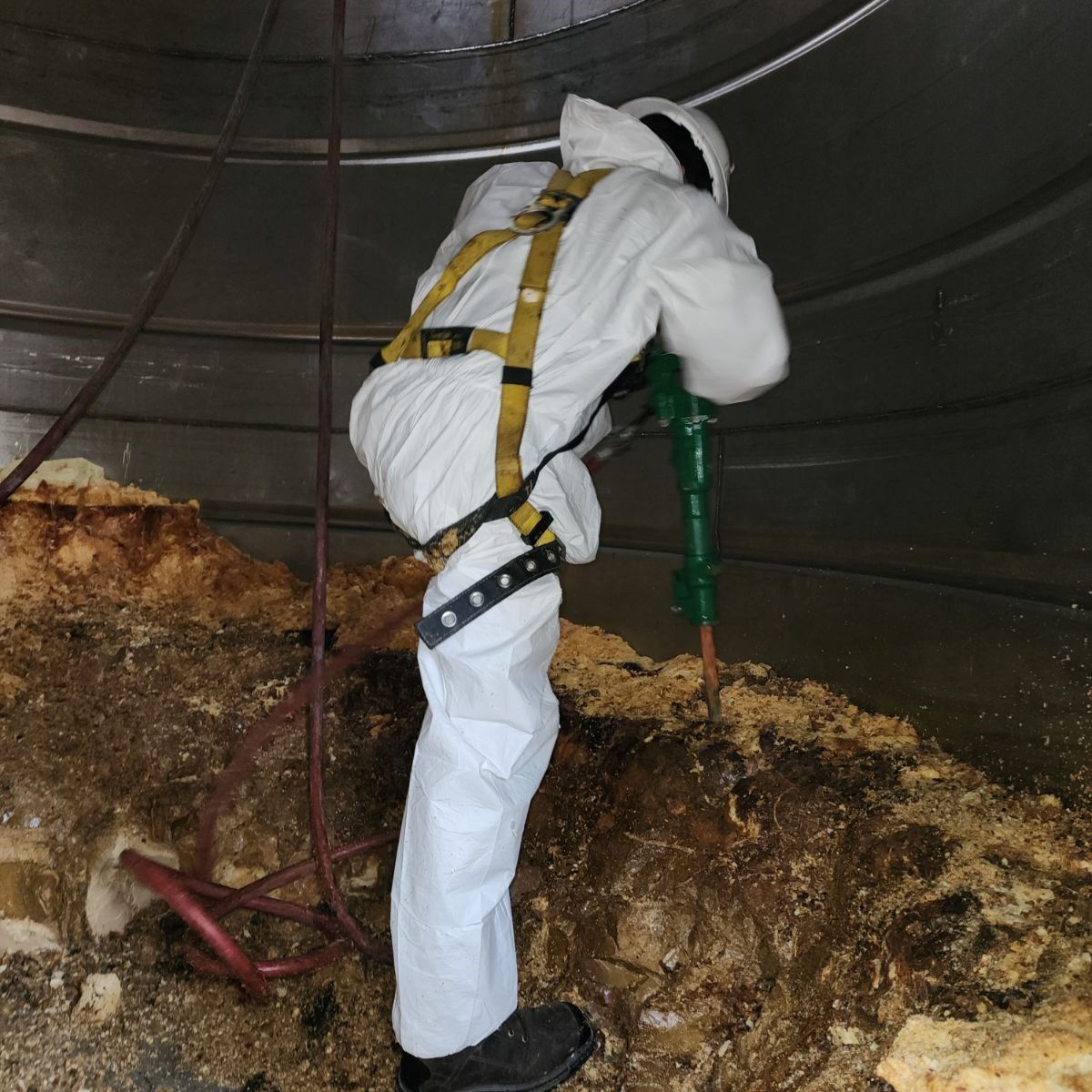
Wrap-Up
First Environmental works closely with our customers to be the most-effective approach to helping them. We want our customers to save money by choosing the best option for the job. We do our part to make it easy for you. We want to work for you, and we want you to see the difference FEN can make for you. We would be glad to look at any of your vacuum cleaning projects and give you the opportunity to work with our team in 2024!
To speak with a representative about vacuum services or other industrial cleaning jobs call First Environmental today or send us a note via e-mail.


